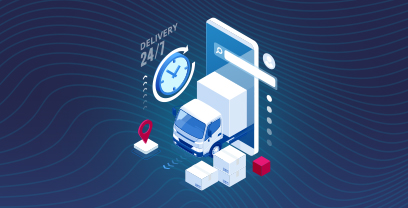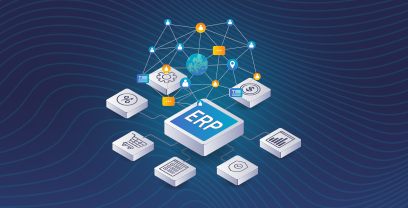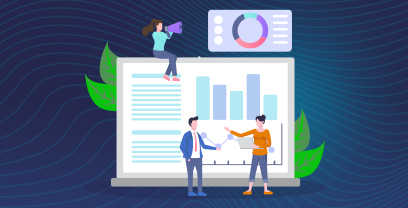Direct and indirect procurement are two fundamental approaches in supply chain management, each serving distinct functions within an organization.
Both focus on improving efficiency and reducing costs but differ in their strategic approach and impact on the core business operations. Streamlining operations in indirect procurement helps maintain an agile and cost-effective organizational structure, while direct procurement emphasizes ensuring the quality and availability of key materials necessary for production. Together, these procurement strategies are essential for robust, efficient business operations.
According to Gartner, by 2027, 50% of organizations will leverage AI-enabled tools to support procurement processes such as contract negotiation – and that will impact both the direct and indirect procurement process flow. Now is the time for procurement teams to familiarize themselves with key challenges of direct and indirect producement processes today, and how technology solutions like Ivalua can help solve them.
In this blog post, we’ll explore the definition and scope of the procurement function, the differences between indirect and direct procurement, and how technology can make a positive impact.
What Is Procurement?
An organization’s Procurement function is responsible for buying goods and services that are used to make the products sold to customers, and the purchasing of products and services used to run the organization on a day to day basis.
However, this is somewhat of an oversimplification of what the modern, best-in-class procurement organizations do for the larger business or organization. Procurement can and should be a significant value generator for the larger organization.
There are different phases of procurement value creation that tie into the Source-to-Pay process:
- Identifying Value: Procurement teams leverage spend data and spend analysis to understand trends in spend management, identify opportunities and develop category management strategies.
- Creating Value: Sourcing and procurement use relevant sourcing processes and tools to engage and select the best-fit supplier.
- Capturing Value: A contract is established that governs the responsibilities and obligations of both supplier and buyer, as well as when the organization has the right Procure-to-Pay processes in place, to ensure compliance to those agreements, goods, services, and prices.
- Monitoring and Measuring Value: The procurement organization takes a holistic view of the Source-to-Pay process and supplier relationships.
It’s important for procurement teams to do this across all spend categories, including direct spend vs. indirect spend, and to understand the differences and varying degrees of focus between each category of spend.
What Is Direct Procurement and How Does It Work?
manage the procurement of direct materials – any materials, parts, or components that are directly incorporated into the products being manufactured. This includes raw materials, and parts that are essential to the production process. The primary focus in direct materials sourcing is to maintain a steady flow of quality materials at the best prices, to ensure uninterrupted production lines and cost efficiency. Supplier relationship management is crucial, as strong partnerships ensure reliable supply, and potentially better pricing and terms.
For manufacturers, the direct procurement process typically begins with the new product introduction (NPI) process which includes product design, product sourcing, quality, and product launch, and continues through production (Supply Chain Collaboration) all the way to the product’s end-of-life. The following is a sample direct procurement process, which follows the procurement value generating cycle and shows common relationships with key systems and data sources.
What Is Indirect Procurement? Key Categories and Dynamics
Indirect procurement refers to the acquisition of goods and services that are not directly incorporated into a product being manufactured but are necessary for the organization’s operations. This category of spend includes office supplies, maintenance services, IT services and software, utilities, and facility management. Indirect procurement is essential for maintaining day-to-day operations, supporting various departments within an organization, and ensuring that the workforce has the tools and resources needed to perform effectively.
Procurement Processes
Direct procurement typically follows a more strategic and structured process due to the high stakes associated with production continuity and quality. This process may include detailed supplier assessments, quality checks, and long-term contracting to ensure reliability and consistency in the supply chain.
Indirect procurement often involves more transactional and routine purchasing activities. The focus is on streamlining operations and reducing costs through methods such as bulk buying and vendor consolidation.
Stakeholders Involved
Direct procurement requires close collaboration with the production department, quality assurance teams, and engineering and product development. Suppliers in this area are often considered strategic partners, and relationships are cultivated for long-term cooperation.
Indirect procurement engages a broader range of stakeholders from across the organization, including IT, facilities management, human resources, and finance departments. Supplier relationships may be less intensive compared to direct procurement unless the service is critical, like IT.
Strategic Objectives
Direct procurement primarily aims to secure the best quality materials at the most cost-effective price to maintain or improve product quality and ensure the production process is economical and efficient. Managing risk and ensuring supplier reliability is crucial to avoid disruptions in the manufacturing process.
Indirect procurement focuses on minimizing costs while ensuring that the organization has all necessary support services and supplies for smooth operations. Efficiency, cost savings, and operational effectiveness are typically prioritized over the strategic relationships that characterize direct procurement.
When deciding on the right strategic approach to any spend category, it is best to consider them through either a direct or indirect spend management lens. , To do this, organizations must evaluate several key factors:
- Core Business Impact: For direct procurement, the focus is on items that are integral to the production and quality of the products being manufactured. For indirect procurement, the items are necessary for the smooth functioning of the business but do not directly influence product output.
- Cost Considerations: Direct procurement often involves large volumes and significant investment, where cost efficiencies can have a direct impact on the bottom line. Indirect procurement costs can accumulate quickly, impacting the overall operational budget, so control and compliance is paramount.
- Supplier Relationships: Direct procurement usually necessitates building strong, strategic relationships with a few key suppliers to ensure product quality and supply chain reliability. In contrast, indirect procurement may involve more transactional relationships with a broader array of suppliers. Read this blog to learn more about direct versus indirect supplier management in three different industries: Manufacturing, Financial Services and Healthcare.
- Risk Management: Direct procurement risks can directly disrupt production, affecting sales and customer satisfaction. Indirect procurement risks might create operational inefficiencies but typically do not directly disrupt the production of goods.
- Regulatory and Compliance Requirements: Direct procurement may involve more stringent compliance requirements due to the direct impact on product quality and safety. Indirect procurement still requires adherence to regulations but often with less direct impact on the product.
- Operational Efficiency and Agility: Indirect procurement offers opportunities to streamline operations and reduce costs through effective management of non-core goods and services. Direct procurement requires efficient management to ensure timely availability of essential materials.
- Innovation and Technological Needs: Direct procurement might focus more on technological advancements that can improve product quality or reduce production costs. Indirect procurement could leverage technology to improve process efficiencies and reduce overhead.
- Strategic Objectives: Direct procurement should support core business goals related to product and market growth, while indirect procurement should align with objectives such as cost control, process improvement, and support service enhancement.
Challenges and Opportunities in Direct and Indirect Procurement
Procurement teams are having to think out of the box and an example of this is how some companies are dealing with the chip shortage. As Ivalua’s Sundar Kamak said, “Each year, millions of devices and equipment containing chips are scrapped or thrown away – the UN found there was 53.6 million metric tonnes of e-waste in 2019 globally, of which just 17% was recycled.” Kamak noted that companies working with strategic suppliers on direct procurement have an opportunity here to save money, fill the shortfall and also meet some of their ESG targets on the way.
Challenges in Direct Sourcing
One major challenge of direct procurement is maintaining a reliable supply chain, especially in industries where raw materials are subject to market volatility and geopolitical risks. This necessitates advanced risk management strategies to preemptively address potential disruptions. Another challenge is quality control, as the quality of procured materials directly affects the final product’s quality, necessitating stringent supplier evaluation and quality assurance processes. Additionally, direct procurement often requires substantial upfront investment and tight integration with production schedules, making timing and financial forecasting crucial components that need meticulous management.
Challenges in Indirect Sourcing
A key challenge in indirect procurement is the lack of visibility and control over spending, as indirect expenses are often decentralized across various departments, leading to inconsistent procurement practices and potential overspending. Managing a diverse and extensive supplier base for various non-core purchases like office supplies or IT services can be cumbersome and inefficient. Moreover, indirect procurement is prone to maverick spending due to the less stringent oversight, which can undermine negotiated contracts and inflate costs. Procurement optimization, for many organizations, requires ensuring employees have access to pre-negotiated catalogues of goods and services which they can shop from on an as-needed basis. This type of Amazon-like experience is commonplace in modern Source-to-Pay and Procure-to-Pay platforms, and greatly improves end-user adoption.
Procurement software and automation present substantial opportunities to enhance efficiency and optimize costs in procurement processes. These technologies enable cost savings through strategic direct and indirect sourcing and supplier consolidation, allowing organizations to negotiate better terms and reduce the number of suppliers, which simplifies management and often lowers costs. By consolidating suppliers, companies can leverage their purchasing power to secure more favorable pricing and terms.
Additionally, procurement software helps to enhance supplier relationships and performance management with automated systems that provide detailed analytics and real-time data to help organizations assess supplier performance more accurately and consistently. This leads to stronger, more collaborative relationships with suppliers, as data-driven insights help pinpoint areas for improvement and opportunities for growth.
Procurement software also helps to improve risk management and compliance. Automated tools can monitor compliance with regulatory requirements and internal standards across the entire supply chain. They provide alerts for any deviations, enabling quick corrective actions to mitigate risks, such as penalties for non-compliance or disruptions due to supplier issues. Automation also standardizes procurement processes, reducing the likelihood of errors and maverick spending that can expose the organization to financial and operational risks.
Read Next-Generation Strategic Procurement: The Digital Competitive Advantage to explore the latest trends and groundbreaking strategic initiatives in the latest ProcureTech Report.
Sourcing Strategies for Effective Procurement
To ensure effective procurement, it’s important to explore opportunities for optimizing both direct and indirect procurement to drive cost savings and efficiency gains. This includes analyzing data to identify opportunities for cost savings, and measuring and optimizing indirect spend.
What are the top KPIs for measuring indirect procurement performance?
- Cost Savings: Measures the reduction in costs achieved through procurement activities compared to previous periods.
- Purchase Order Cycle Time: Tracks the average time taken from the creation of a purchase order to its fulfillment.
- Supplier Compliance Rate: Assesses how well suppliers comply with the terms and conditions set out in contracts.
- Contract Utilization: Measures the percentage of spend that goes through negotiated contracts.
- Maverick Spend: Tracks spending that occurs outside of pre-approved procurement processes.
- Supplier Lead Time: Measures the time it takes for suppliers to fulfill orders after they have been placed.
- Procurement ROI: Calculates the return on investment for the procurement function by comparing the savings or value generated to the costs of the procurement operations.
- Supplier Risk Management: Evaluates the effectiveness of identifying, assessing, and mitigating risks associated with suppliers.
Of course, it’s important to collaborate closely with internal stakeholders to align procurement KPIs with business objectives. Technology, such as e-procurement platforms and AI-riven analytics, can help.
Platforms like Ivalua are transforming direct and indirect procurement processes, with sourcing software and standardized workflows. Check out this demo to learn how.
[Case Study] How Körber Manages Indirect and Direct Sourcing Activities on One Platform
Körber manages several companies across five business areas – Digital, Pharma, Supply Chain, Tissue and Tobacco, and maintains 100 international locations. The procurement team was managing multiple ERP systems, which left a lot of room for improvement in supplier collaboration and communication. The team came to Ivalua in hopes of improving traceability of procurement decisions to optimize spend, simplify the IT infrastructure, and unlock more value from suppliers.
With Ivalua, Körber benefits from a central, flexible, and fully integrated S2P platform that can drive consistency globally while meeting unique Business Area requirements. With a single platform, they can manage all sourcing activities – direct and indirect – and leverage end-to-end collaboration to bring suppliers and internal stakeholders together. They now have a unified data model to support true 360-degree visibility of suppliers worldwide.
“After a comprehensive evaluation of many leading vendors, we selected Ivalua. Their approach has been that of a true partner. And the Ivalua platform enables us to manage all major sourcing activities [direct and indirect] in one place, driving standardization and supplier data harmonization across our global businesses.”
– Michael Stietz, SVP & Chief Procurement Officer, Körber
Read the full case study.
Direct or Indirect Procurement: Ivalua Has You Covered
The popularity of cloud-based procurement software is on the rise due to its numerous benefits over traditional systems. These cloud solutions offer flexibility, scalability, and accessibility, allowing users to manage procurement processes remotely and in real-time. Cloud-based systems minimize the need for extensive IT infrastructure, as well, leading to cost savings.
Meanwhile, generative AI is playing a transformative role in procurement by automating routine tasks and providing deep insights that enhance decision-making. This technology can analyze vast amounts of data to identify trends, predict risks, and suggest optimizations, thereby streamlining procurement processes and reducing human error.
AI-driven systems can automatically generate purchase orders, negotiate terms with suppliers, and simplify inventory management, freeing up human resources for more strategic tasks. Furthermore, generative AI can offer predictive analytics, helping procurement teams anticipate market changes and adjust strategies accordingly.
Procurement software with these capabilities is crucial for businesses of all sizes, providing the ability to streamline and automate processes from sourcing to payment, ensuring that companies can leverage economies of scale, maintain compliance, and reduce operational costs.
Ivalua’s S2P (Source-to-Pay) platform is adept at managing both direct and indirect procurement needs, offering a versatile solution for businesses seeking comprehensive procurement management. This flexibility allows companies to streamline their entire procurement process, from sourcing raw materials to managing office supplies, all within a single, integrated platform, enhancing efficiency and control over every aspect of procurement.
Conclusion
Effective management of both direct and indirect procurement requires understanding the impacts of each type, using suitable KPIs for performance tracking, and implementing robust and strategic sourcing software. Such tools enhance decision-making, reduce costs, and ensure compliance across all procurement activities.
In harnessing the power of a comprehensive S2P platform, organizations unlock the potential for a more resilient and adaptable procurement function. This not only propels efficiency and strategic advantage but also supports the holistic success of the business in a competitive landscape. Through diligent implementation of these practices and technologies, companies can expect to witness a transformation in their procurement operations, achieving operational excellence and a distinctive edge in the marketplace.
Transform the way your organization sources and pays, all with the support of Ivalua’s comprehensive suite of tools designed to streamline operations, minimize risk, and optimize spend. Don’t wait any longer to revolutionize your procurement strategy. Explore Ivalua’s S2P platform and elevate your procurement process starting now!
Learn more about Ivalua’s S2P platform, and get started today!




